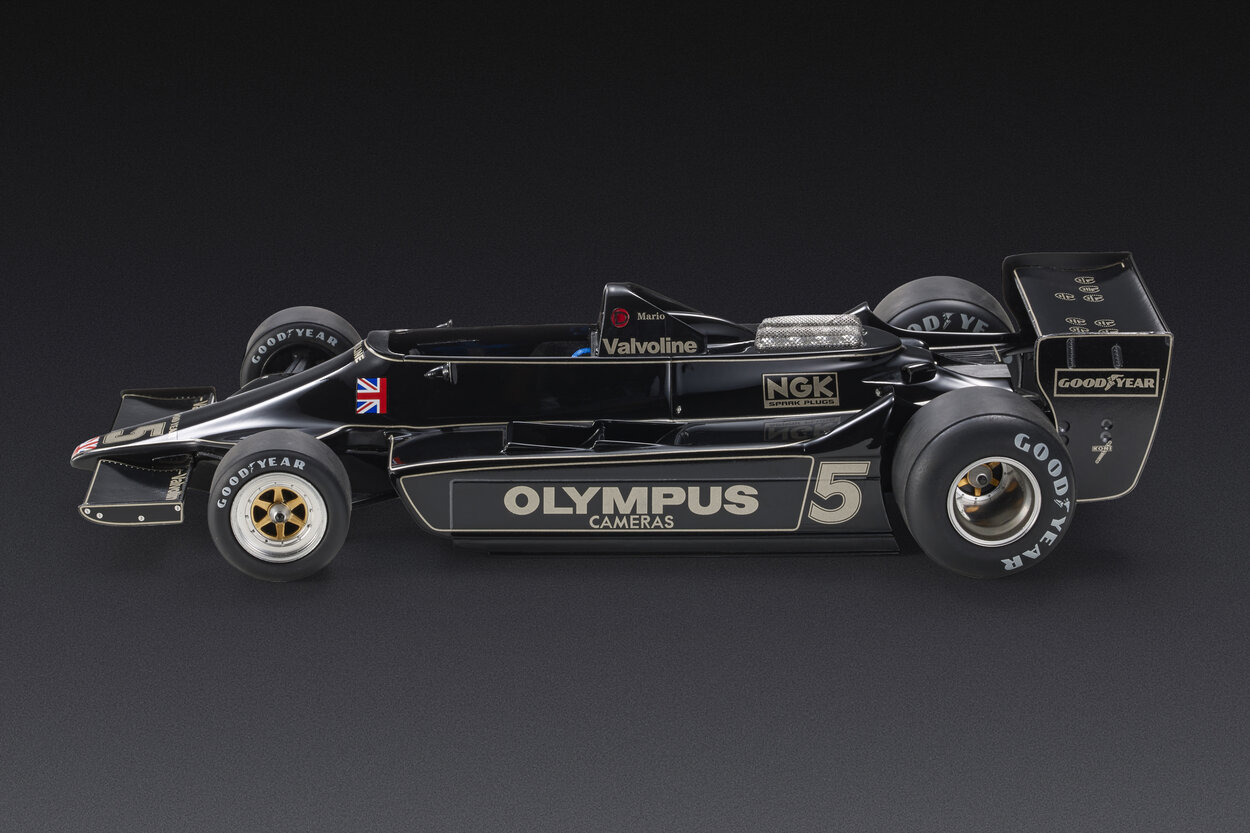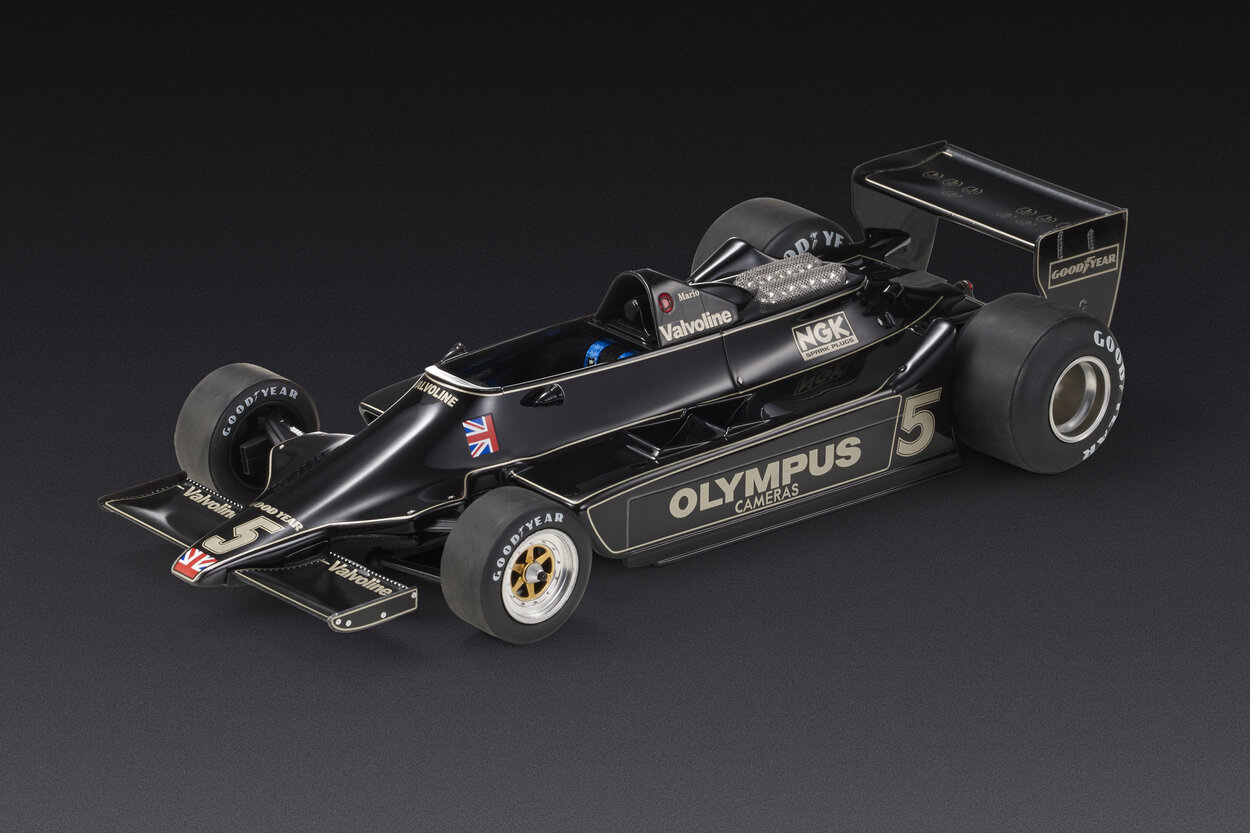Lotus 79
It is the ultimate wing car, the ground-effect single-seater that leaves opponents only crumbs. If it had been completely reliable, it would have likely won every race it entered in the 1978 season. Champion and runner-up in the Drivers’ World Championship, Constructors’ World Champion.
Chapman and his engineers refine the revolution they have introduced to Formula 1 with the car of the previous year. In the winter between ’77 and ’78, they redesign the so-called Venturi tunnels that channel the air under the car’s side pods through the upside-down wing. They reshape the front part of the bodywork, lengthening it in the rear area, sculpting it around the tires, and completely revising the suspensions. The large air intake above the driver’s head disappears. The dimensions of the rear wing are reduced.

Drivers:
Mario Andretti: Finally, world champion! For three years, Mario focuses solely on Formula 1, temporarily setting aside the American championships series. His 1978 is an extraordinary year. His five victories in Belgium, Spain, France, Germany, and the Netherlands hand him the world crown on a silver platter. He wins at Monza as well, but is penalized one minute for a jump-start and has to settle for sixth place. He secures seven pole positions at the wheel of the Lotus 79 – and two fastest laps.
Ronnie Peterson: After a few seasons driving uncompetitive cars, Ronnie returns a protagonist. Following his first victory in South Africa in the previous season’s car, he achieves what will be his last victory in Formula 1 at Zeltweg. He secures three second places, always behind his teammate, with whom he forms an extremely cohesive pair. He finishes third at Anderstorp, in the home Grand Prix. With the 79, he sets two pole positions at Brands Hatch and Silverstone, and achieves three fastest laps. He dies at Monza on the day Andretti clinches the world championship.
Our model cars:

The mini-skirts seal the lower part of the side pods to the ground. The Lotus 79 gains speed on the straight, but especially in corners. The 79 model produces 30 percent more downforce than the car it succeeded. Incidentally, with its proportions practically perfect and the black and gold JPS livery, it is one of the most beautiful single-seaters in the entire history of Formula 1.
The 1978 season is a fairy tale: eleven races contested (the Lotus 79 debuts only in Belgium on May 21), six victories, three second places, and one third place, nine pole positions, and five fastest race laps. The following year things don’t go so well. Chapman is forced to field the 79 again because the new car does not provide the necessary guarantees. But by now, the competition, by copying it, has reached the same level of a car that the year before had no rivals.

